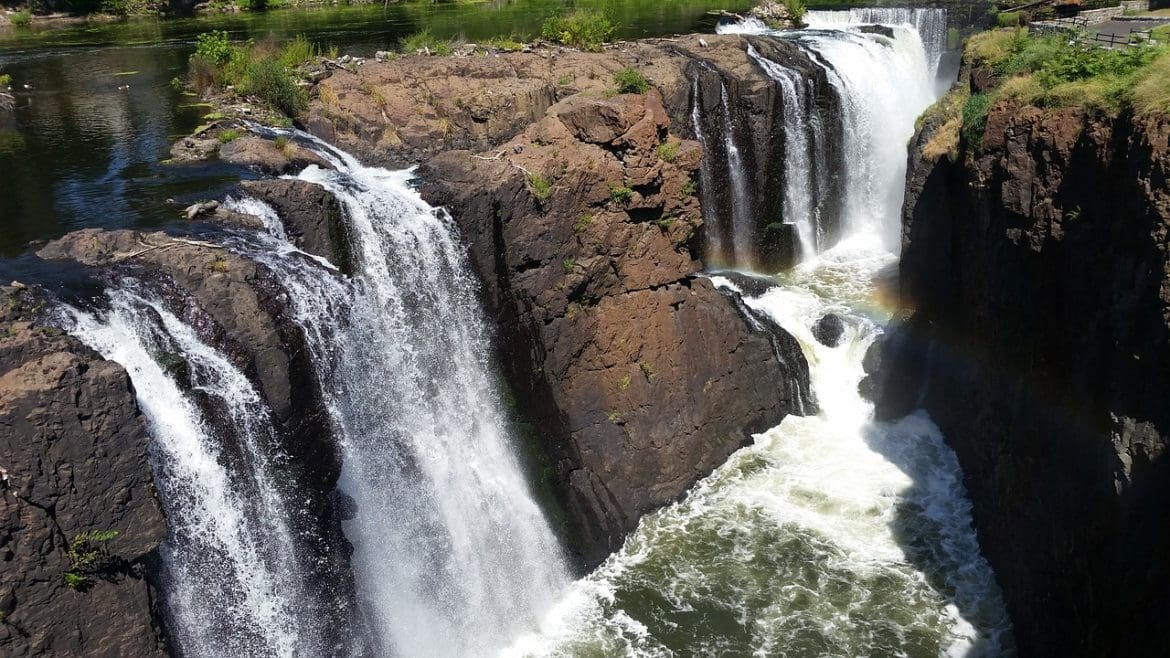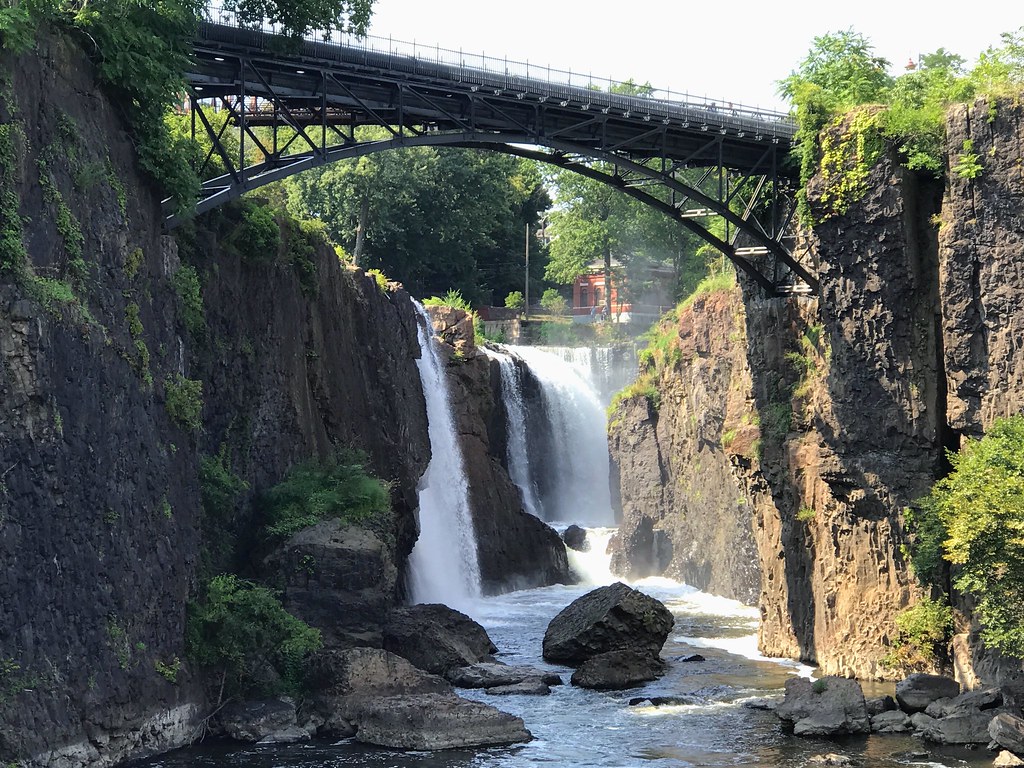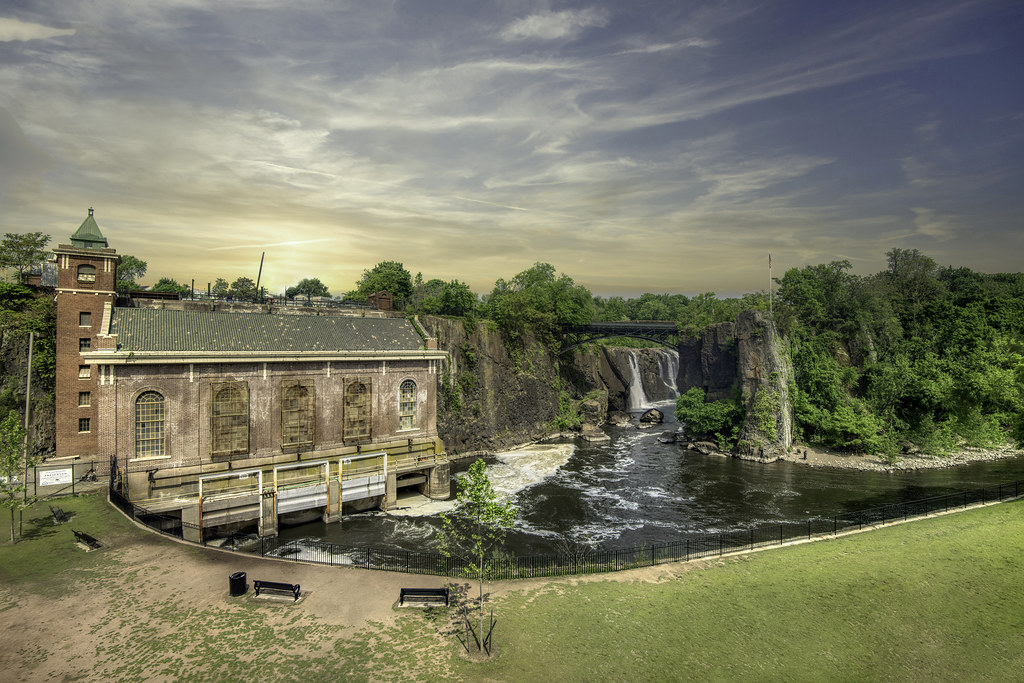If you’re looking for a scenic spot to explore in New Jersey, the Paterson Falls should be at the top of your list. These majestic falls, which are located in the city of Paterson, have a rich history that dates back hundreds of years. From Native American legends to industrial innovations, here’s a brief look at the history of the Paterson Great Falls.
The Paterson Falls are a series of New Jersey waterfalls on the Passaic River, which flows through the northern part of the state. The falls are located in the city of Paterson, which was founded in 1792 as a manufacturing center. However, long before Europeans settled in the area, the falls were known to Native American tribes as a sacred site.
Who Discovered the Paterson Great Falls?
According to legend, the Lenape tribe believed that the Great Spirit had created the Paterson Great Falls as a sign of his power and majesty. They would often hold ceremonies near the falls, and believed that the mist from the water created a connection between the physical and spiritual worlds. To this day, the Paterson Falls are considered a sacred site by many Native American tribes.
The Falls were already known to the indigenous Lenape people who lived in the area long before European settlers arrived in the region. However, the falls were officially “discovered” by European explorers in the late 17th century. The first European to record the existence of the falls was the Dutch explorer Captain Arent Schuyler, who sailed up the Passaic River in 1679 and noted the presence of the waterfalls.
When European settlers arrived in the area in the 17th century, they recognized the potential of the Paterson Falls as a source of power for industry. In 1778, Alexander Hamilton, who was then serving as George Washington’s aide-de-camp, visited the falls and saw their potential for powering mills and factories. He later returned to the area as Secretary of the Treasury, and in 1791, he founded the Society for Establishing Useful Manufactures (SUM), a public-private partnership that aimed to promote industrial development in the United States.
The SUM purchased land around the falls and began building a system of canals and waterwheels to harness the power of the falls for industry. The first water-powered cotton spinning mill in the United States was built at the Paterson Falls in 1794, and by the early 1800s, the area had become a major center of industrial production. Factories producing textiles, locomotives, and other goods were built along the banks of the Passaic River, powered by the falls.
The Paterson Falls Over the Centuries
As the city of Paterson grew, so did its reputation as a center of innovation. In 1837, John Colt, the brother of gunmaker Samuel Colt, built the Colt Gun Mill in Paterson. The factory used advanced techniques to produce interchangeable parts for firearms, which revolutionized the gun industry. Other notable inventions that came out of Paterson include the Colt revolver and the first submarine to sink an enemy ship, which was built by John Holland in Paterson in 1878.
Despite its success as an industrial center, Paterson was not without its challenges. The city suffered from pollution and environmental degradation as factories dumped waste into the Passaic River. The city was also plagued by social unrest, including a major strike by silk workers in 1913 that turned violent. However, the city continued to thrive as a center of industry, and many of the factories built along the banks of the Passaic River still stand today as a testament to the city’s industrial heritage.
In recent years, the Paterson Falls have become a popular tourist destination, attracting visitors from around the world who come to see the majestic waterfalls and learn about their history. In 2011, the Great Falls National Historical Park was established to preserve and protect the falls, and to tell the story of their role in American history.
The Paterson Falls in Pop Culture
The Great Falls was even featured on episodes of “The Sopranos” – most notably the episode entitled “The Blue Comet,” which aired during the show’s sixth season. The Paterson Falls were featured as a backdrop to a discussion between several characters. The scene takes place at the base of the Galls, with the characters standing on a platform overlooking the rushing water. Though the scene is brief, it highlights the natural beauty and historical significance of the Paterson Falls, which have been a landmark in New Jersey for centuries. The inclusion of the falls in “The Sopranos” is just one example of their enduring appeal, both as a natural wonder and a symbol of the state’s rich history.
Today, the Paterson Falls are a symbol of the city’s resilience and perseverance. Despite the challenges it has faced, Paterson has continued to reinvent itself over the years, from an industrial powerhouse to a center of innovation and cultural diversity. And through it all, the Paterson Falls has remained a constant presence, a reminder of the power and beauty of nature.
About the Author/s
The New Jersey Digest is a new jersey magazine that has chronicled daily life in the Garden State for over 10 years.





